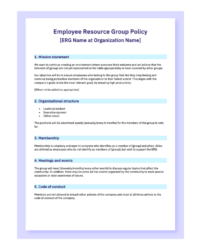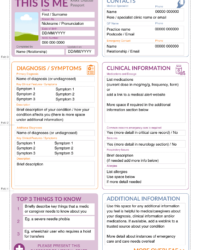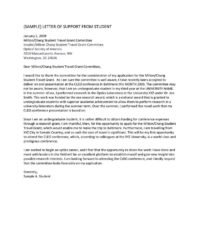Utilizing such a framework offers several advantages. It saves time and effort by eliminating the need to create project plans from scratch. It promotes best practices by incorporating established project management methodologies. Standardized documentation facilitates communication and collaboration among team members and stakeholders. Moreover, a pre-structured approach improves the accuracy of project estimations and increases the likelihood of successful project completion.
This foundation enables exploration of specific project management topics such as task management, risk assessment, resource allocation, and progress tracking. The following sections will delve into these areas, providing practical guidance and insights for effective project execution.
Key Components
Effective templates for managing projects typically incorporate several crucial elements to ensure comprehensive project coverage.
1. Project Overview: This section provides a high-level summary of the project, including its purpose, objectives, and expected outcomes. A clear articulation of the project’s goals is essential for aligning team efforts and stakeholder expectations.
2. Scope Definition: Precisely defining the boundaries of the project is critical. This component outlines what is included and, importantly, what is excluded from the project’s scope, preventing scope creep and maintaining focus on core deliverables.
3. Task Breakdown: Projects are decomposed into smaller, manageable tasks. This section details individual tasks, dependencies between them, assigned responsibilities, and estimated durations. A well-defined task breakdown structure facilitates efficient workflow management.
4. Timeline and Milestones: A visual representation of the project schedule, including key milestones and deadlines, ensures timely progress tracking and allows for proactive adjustments if necessary.
5. Resource Allocation: This component identifies the resources required for project completion, including personnel, budget, and tools. Effective resource allocation optimizes utilization and prevents bottlenecks.
6. Risk Management: Potential risks and mitigation strategies are documented to proactively address potential challenges and minimize their impact on project success.
7. Communication Plan: This section outlines the communication channels, frequency, and reporting mechanisms to ensure transparent and efficient information flow among stakeholders.
8. Project Closure: Procedures for project completion, including documentation, handover processes, and post-project reviews, ensure a smooth transition and valuable learning for future projects.
These elements provide a robust framework for planning, executing, and closing projects effectively. Integration of these components within a template facilitates consistent project management practices and enhances the likelihood of successful outcomes.
How to Create a Project Management Application Template
Creating a robust template facilitates efficient project management and ensures consistency across projects. The following steps outline a practical approach to template development.
1. Define the Scope: Determine the types of projects the template will support. Consider project complexity, industry specifics, and organizational requirements. A narrowly focused template offers greater precision, while a broader template provides more versatility.
2. Identify Key Components: Select essential elements based on the defined scope. Standard components include project overview, scope definition, task breakdown, timeline, resource allocation, risk management, communication plan, and project closure procedures.
3. Choose a Format: Select a suitable format, such as a spreadsheet, document, or specialized project management software. Consider factors like ease of use, collaboration features, and reporting capabilities.
4. Structure the Template: Organize the chosen components logically within the selected format. Utilize headings, subheadings, and visual cues to enhance clarity and navigation.
5. Develop Instructions and Guidelines: Provide clear instructions on how to use each section of the template. Include examples and best practices to ensure consistent application.
6. Test and Refine: Pilot test the template with a representative project. Gather feedback from users and refine the template based on practical experience to optimize its effectiveness.
7. Implement and Train: Deploy the finalized template within the organization. Provide training to ensure users understand its purpose and application, maximizing its utility and adoption.
A well-designed template provides a structured framework for managing projects, streamlining processes, and improving the likelihood of successful outcomes. Consistent application and periodic review ensure the template remains relevant and effective in dynamic project environments.
Templates for managing project applications offer a structured approach to project planning, execution, and closure, ensuring consistency and efficiency across diverse projects. Key components, such as a well-defined scope, task breakdowns, resource allocation plans, and risk management strategies, contribute to a comprehensive project framework. Developing effective templates involves careful consideration of project scope, component selection, format choice, structure, and user guidance. Thorough testing and refinement are crucial for optimizing template utility and ensuring successful implementation. Utilizing such structured templates promotes best practices, enhances communication, and ultimately increases the likelihood of successful project outcomes.
Effective project management hinges on meticulous planning and execution. Leveraging well-designed templates empowers organizations to streamline processes, improve resource allocation, and mitigate potential risks. Embracing standardized project management methodologies contributes to organizational efficiency and drives successful project delivery in today’s dynamic business environment. Continued refinement and adaptation of these templates are crucial for maintaining alignment with evolving project needs and achieving sustained project success.


